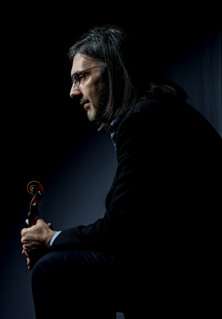|
Back
Tradition Reigns in the Vienna Phil’s Annual Visit New York
Isaac Stern Auditorium, Carnegie Hall
03/03/2019 - & February 23, 24 (Vienna), 26 (Amsterdam), 2019
Joseph Haydn: Symphony No. 97 in C Major
Wolfgang Amadeus Mozart: Violin Concerto No. 5 in A Major “Turkish”, K. 219 – Symphony No. 41 in C Major “Jupiter”, K. 551
Leonidas Kavakos (violin)
Vienna Philharmonic Orchestra, Adám Fischer (conductor)

L. Kavakos (© Marco Borggreve)
The Vienna Philharmonic’s annual residency at Carnegie Hall is a highlight of any New York season. This year it features four concerts split evenly between the dynamic Hungarian conductor Adám Fischer and the San Francisco Symphony’s music director Michael Tilson Thomas. Many in musical New York found little to get excited about. This year’s programs are heavily traditional, hinting toward the bicentennial of Beethoven’s death this year, which will be celebrated more formally in 2019-2020 by a huge number of Beethoven-dominated programs already announced on Carnegie’s schedule. Many critics were nowhere to be seen. But the ire of those who want something more modern is beside the point: the classical Middle European repertoire is the Vienna Philharmonic’s bread and butter, and it was fully on display.
The ensemble’s traditional Sunday afternoon concert featured what are arguably the greatest symphonies by two of the great composers who define the classical style for what it really is: Haydn and Mozart. Both are in C major, the quintessential key of the Classical era’s musical confidence, and each has an Allegretto third movement based on the rhythm of the minuet, the era’s most recognizable dance.
It would be hard to imagine nobler playing of these seminal works by any other orchestra. Haydn’s 97th is less famous than others from his London period, but its ebullience is fully conversant with the Romantic period that followed. Without Haydn, there could never have been a Mozart or a Beethoven, and the history of music would have been dramatically different. And indeed, in the hands of the Viennese players and their superb conductor, the symphony radiated elegance and charm that would have pleased any eighteenth-century impresario. Mozart’s 41st, the turns and break of which depart from the strictly classical idiom, anticipated the Sturm und Drang of raw feeling to come in Beethoven. Here it, too, sounded every bit as it was meant to sound, with booming percussion and solid strings and woodwinds from those who play it best.
The grand symphonies were punctuated by the last of Mozart’s five violin concertos, none of which ranks among the composer’s best or most noteworthy works. But the Fifth Violin Concerto is the most famous among them, and is styled “Turkish” for its “exotic” folk influences, which are actually Hungarian in origin and inspiration and only “Eastern” by association. Fischer led the orchestra deftly through their less familiar turns. The effort unfolded well enough, but he never quite seemed to agree on a tempo with the solo violinist, Leonidas Kavakos. At a few moments, Fischer nervously looked over his shoulder, almost seeming to ask Kavakos what he was doing or where he was going with the solo part of the score. It was a curious episode of disjointedness in an otherwise flawless concert.
Lively encores included two more Mozart pieces, a precocious sinfonia composed when Mozart was just thirteen (he was an aged 32 when he produced the symphony on the main program), and the deliciously rendered overture to The Marriage of Figaro, which can pass so blandly in the world’s opera houses but was invigorated in full color here.
Paul du Quenoy
|